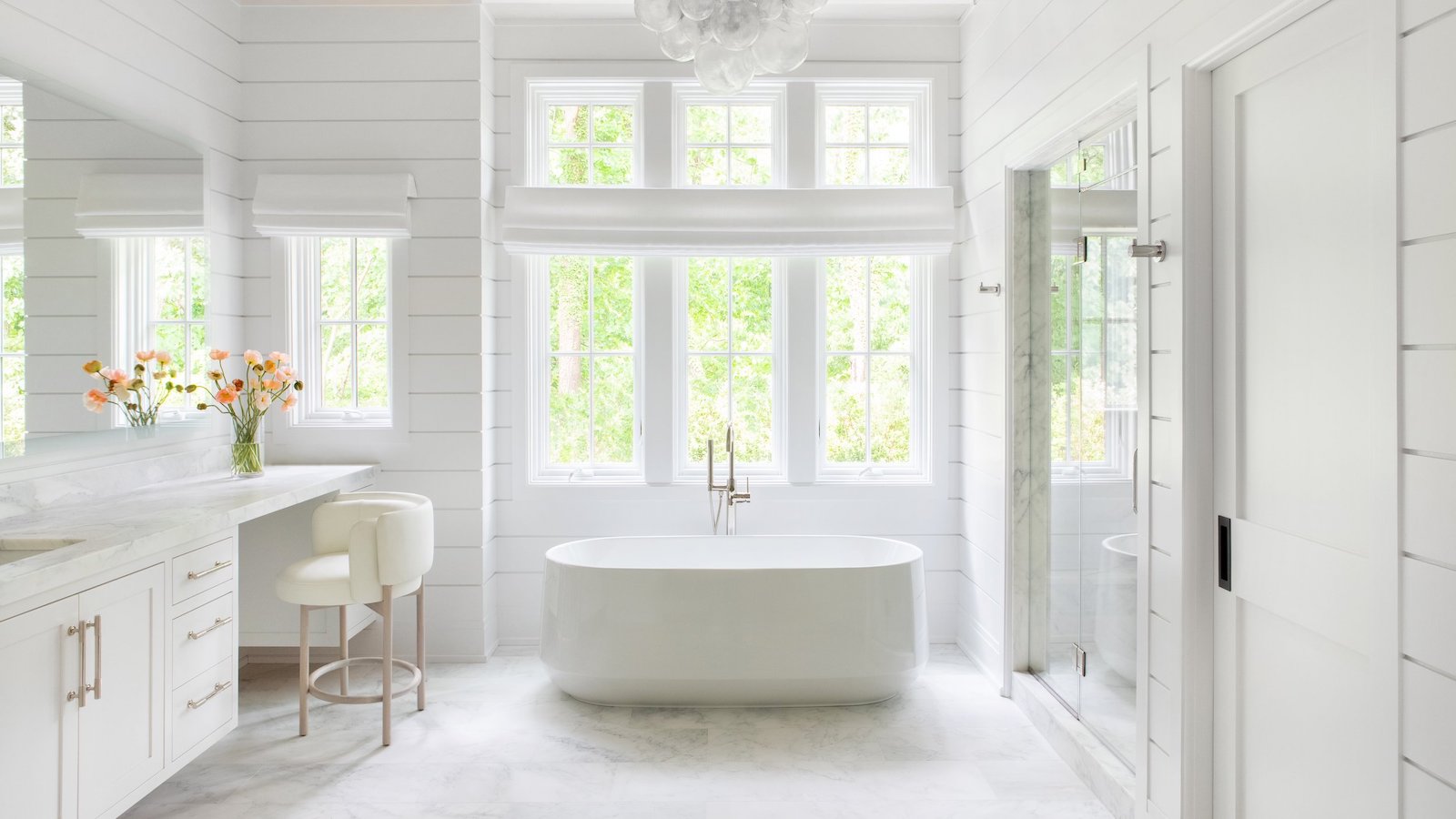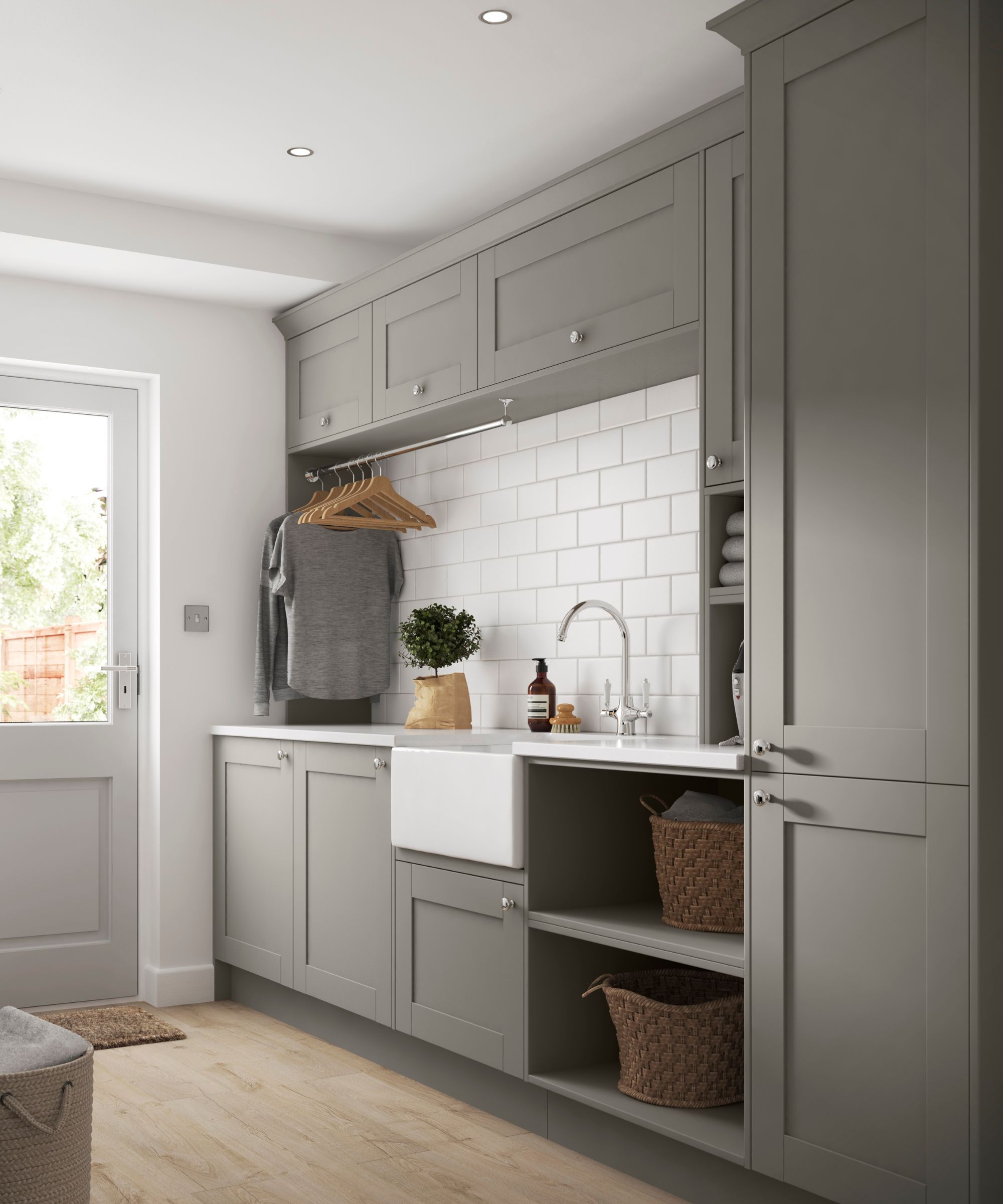
As soon as you see it, you’ll want to be sure of the best ways to clean mold off walls. Mold can be detrimental to the health of household members, and it’s unsightly, too, so dealing with it effectively is essential.
There are many types of household mold, and thanks to the moisture and nutrients that the home environment supplies, walls are one of the places they can thrive. The room’s humidity means black bathroom mold is a frequent undesired presence, for example.
We asked the experts to share their knowledge on the top methods of getting rid of mold growing on walls, and this is what they told us.
The best ways to clean mold off walls
Dealing with mold is important for keeping your home environment healthy. But before you get cleaning, be mindful of the cautions from mold pros.
‘If the mold growth covers a large area (typically more than 10 square feet) or if it’s widespread throughout your home, it may be beyond the scope of DIY remediation,’ says Darren Hudema, Director of Training and Technical Services at PuroClean. Professionals have the expertise, equipment, and resources to handle large-scale mold infestations effectively.’ Call in a pro, too, if you have any health issues that can be exacerbated by mold.
Moldy drywall? Don’t attempt to clean it. ‘Remove and replace porous surfaces like drywall,’ says mold and air quality expert Michael Rubino, Founder of HomeCleanse. ‘The contamination can exist deep within the fibers and be impossible to remove altogether.’
Know your surfaces

We’ve already seen, above, that surface type matters when it comes to cleaning mold from walls, and this is a quick guide from Michael Rubino so you can be sure about which of the cleaning methods below is a possibility for the wall you’re cleaning:
- Porous: liquid absorbs into them, such as clothing, lampshades, and carpet
- Semi-porous: some liquid pools on top, and some seeps into it, such as unsealed wood, leather furniture, and some plastic
- Non-porous: liquid pools on top of them, such as finished wood, sealed countertops, and glass
Vinegar
Vinegar can be a good way to clean a moldy wall, depending on the surface type. ‘Vinegar is only effective for non-porous surfaces,’ explains Gus Pullen, owner of Pure Maintenance of Texas.
‘Mix equal parts of vinegar and water in the spray bottle,’ recommends Gus. ‘Spray onto the affected moldy area and let it sit for a minimum of one hour. Use a brush to remove the mold, then wipe the area clean with a damp microfiber cloth.’
Bleach
Don’t reach for the bleach before you read this. Like vinegar, it’s a way to get rid of mold on non-porous surfaces only. ‘If the wall is a porous material, I do not recommend using bleach,’ advises Gus Pullen.
Bleach has another issue you should be aware of. ‘It may discolor some material, so be careful,’ says Gus. ‘Test a small hidden area before starting to make sure it doesn’t discolor or damage the wall.’
If you can use bleach, this is Gus’s recommendation: ‘Dilute one cup of bleach in one gallon of water. Using a spray bottle, apply to the moldy area. Make sure to ensure proper ventilation and wear protective gear: goggles, gloves, and old clothes that can be thrown away. Bleach will discolor your clothes. Scrub the area gently to remove the mold, then rinse with water.’
Botanical cleaner
For non-porous surfaces, Michael Rubino recommends a botanical cleaner. ‘Spray a botanical cleaner on the surface (such as Benefect Decon 30 from Amazon). Allow this to sit for 30 seconds, then wipe with a microfiber towel. Microfiber towels are 100 times more effective at wiping away small particles than regular rags.
‘Repeat the process at least three times to ensure all contaminants are removed, including mycotoxins and bacteria, flipping the towel to a new side each time. Allow the surface to dry completely.’
Hydrogen peroxide
Hydrogen peroxide can be used on semi-porous surfaces. ‘Use a HEPA vacuum cleaner and thoroughly go over the surface,’ advises Michael Rubino. 'Apply 8 percent hydrogen peroxide and allow this to dry. Use an abrasive method such as sanding or wire brushing to go over the surface (if possible). HEPA vacuum the surface thoroughly once again. Spray a botanical cleaner and allow it to sit for 30 seconds. Wipe it with a microfiber towel and then allow it to dry.
‘Complete the spray, wipe down, and drying process once more using a new side of the microfiber towel. Dry encapsulate/seal the surface (if possible). When dry, wipe again with a microfiber towel.’
Store-bought mold cleaners
A mold cleaner can be a straightforward way to clean mold off walls. ‘Different cleaners are formulated for various mold types and surface materials, so always check the label to make sure it is suitable for your application,’ advises Gus Pullen. ‘Follow the instructions on the label, but typically, you will spray on the moldy area, let sit for a specific time, and then scrub and rinse.
‘Keep in mind some formulations are for cleaning, meaning they will clean the mold staining but will not kill the mold,’ he continues. ‘Others kill the mold. You will want to purchase one or both, depending on your specific circumstances.
‘Also, keep in mind that many of these products contain bleach, so again, make sure to follow the label’s directions and wear protective gear if necessary.’
FAQs
Will mold come back after being treated with vinegar?
Mold can come back after being treated with vinegar or after another treatment if what led to its growing isn’t addressed. ‘Simply cleaning mold without addressing the underlying moisture issue that caused it may result in recurrent mold growth,’ says Darren Hudema, Director of Training and Technical Services at PuroClean. ‘It’s essential to identify and rectify the source of moisture to prevent future mold problems.’
As well as removing mold from walls, you may need to get rid of bathroom ceiling mold in this room as it thrives in the humid atmosphere, and you can need to clean mold in the shower, too. To keep your home healthy, check for mold regularly and consider investing in the best dehumidifier to reduce moisture in areas like a laundry room to deprive mold of the conditions it needs to grow.







